Comments / Questions (83)
![]() Feli wrote:
Feli wrote:
The bands I made were too short to cover the back stitches or to be joined mid-back. What can I do as an alternative?
18.11.2025 - 07:51DROPS Design answered:
Hi Feli, try to pick up carefully some stitches along the short edge of band and lenghten it this way. Happy knitting!
28.11.2025 - 08:19
![]() Liz Andersson wrote:
Liz Andersson wrote:
Hej Jag förstår inte hur jag ska sätta markörerna. Jag stickar stl M. Det stämmer inte! 5+16+22+16+5=64 Om jag har 8 kantmaskor blir ju totalen 72 och inte 68 som jag har efter stickat 4 kantmaskor, lagt upp 60 nya maskor och stickat på 4 kantmaskor = 68 maskor som det står i mönstret.
08.11.2025 - 10:40
![]() Disa wrote:
Disa wrote:
Hej! Jag stickar koftan i storlek M och är nästan färdig men brushed alpacka silk-garnet räckte inte riktigt för mig (fattas garn till ca 1/2 ärm och knytbanden). Om fler också har upplevt det kanske mängden garn i beskrivningen bör justeras.
02.11.2025 - 17:45
![]() Britt-Marie wrote:
Britt-Marie wrote:
Hej ska börja sticka den men har aldrig gjort en kofta som stickas uppofrån och ned förut. Finns det instruktionsvideor som visar de olika momenten?
17.10.2025 - 09:10DROPS Design answered:
Hej Britt-Marie. Vi har videon Hur man stickar en tröja uppifrån och ner som visar generellt hur man gör, den kanske kan vara till hjälp. Mvh DROPS Design
17.10.2025 - 09:51
![]() Karianne wrote:
Karianne wrote:
Hvor på første pinne skal det økes til v-hals? Etter kantmaskene? Midt i kantmaskene?? Synes det står veldig dårlig forklart i oppskrifta...
07.10.2025 - 16:06DROPS Design answered:
Hei Karianne, Du øker innenfor stolpemaskene på begge sidene (etter stolpemaskene på begynnelsen av pinnen og før stolpemaskene på slutten av pinnen). Hilsen Drops Team.
08.10.2025 - 07:17
![]() Eve wrote:
Eve wrote:
Hi, how do I slip 1 stitch purl-wise with strand in front if it is the first stitch in the wrong side of the right band? Thank you :)
06.10.2025 - 14:45DROPS Design answered:
Hi Eve, Here is a link to our video showing you how to work an I-cord edge: https://www.garnstudio.com/video.php?id=1805&lang=en Regards, Drops Team.
07.10.2025 - 06:53
![]() Mikaëla wrote:
Mikaëla wrote:
Hej! Jag har stickat den här och den är jättefin MEN den är så vid upptill att den glider ner över axlarna. Jag har stickat en S och den passar bra i övrigt. Det skulle kanske behöva vara färre maskor i ryggen, men jag vet inte hur man räknar om det. Jag behöver ett mönster som jag kan följa. Har ni fått samma fråga förut och vad föreslår ni? Jag vill gärna sticka en till som sitter bättre men jag vet inte vad jag ska ändra.
04.10.2025 - 13:03DROPS Design answered:
Hej Mikaela, Hvis det ikke er fordi den er for stor, så kan det være selve modellen som gerne glider bagud. Hvis du vil holde den mere sammen, så kan du sy et bånd i øverst langs med halsudskæringen :)
23.10.2025 - 07:44
![]() Mary wrote:
Mary wrote:
When do you start increasing for the v neck? It says to increase on the vneck 1st row then every 4rows for 11 times (large). Am i increasing here plus on the raglan? but the raglan also says to increase every 2nd row 6 times. Then says Row 1 again to increase differently. Can you explain how to increase on the vneck and raglan at the same time?
03.10.2025 - 20:12DROPS Design answered:
Dear Mary, as stated in the previous paragraph: "AT THE SAME TIME increase for both RAGLAN and the V-NECK – read descriptions above. Read both sections below before continuing.". So you need to keep track of which row you are working and which increase you need to work on that row. You start working for the V-neck in the first row after the one where you inserted the markers and you increase every 4th row 11 times. In the same row where you start the V-neck increases you start the RAGLAN increases. The V-neck increases are worked after the bands, while the RAGLAN increases are worked on each side of the markers, so you can work both in the same row if needed. Happy knitting!
05.10.2025 - 18:51
![]() Anne wrote:
Anne wrote:
Hejsa Jeg har et spørgsmål til udtagningen til v-halsen. Hvad betyder udtrykket “inden for kantmaskerne”? Skal fjerde kantmaske tages ud til to masker og den nye maske strikkes drejet og i glatstrikning, for der skal vel forblive fire kantmasker? Mvh. Anne
30.09.2025 - 15:13DROPS Design answered:
Hei Anne. Du strikker 4 kantmasker og så i neste maske økes det, altså det økes i masken før /etter de 4 kantmaskene. mvh DROPS Design
06.10.2025 - 11:59
![]() Hildegard wrote:
Hildegard wrote:
Ich möchte die Jacke gerne mit einem Faden Drops Air stricken. Ist das möglich? Wieviel Air benötige ich dann?
25.09.2025 - 16:21DROPS Design answered:
Hi Hildegard, you will need 300-300-350-400-400-450 g of DROPS Air (depending on your size). Please make sure if your swatch is the same as in the pattern. If not, adjust the needle size to get the right swatch. Happy knitting!
25.09.2025 - 16:59
Delicate Dance Cardigan#delicatedancecardigan |
|
 |
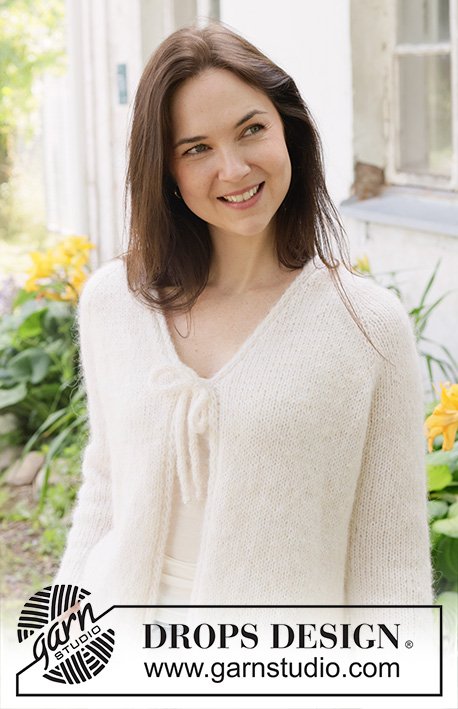 |
Knitted jacket in DROPS Brushed Alpaca Silk and DROPS Flora. The piece is worked top down with raglan, V-neck, rolled edges and I-cord. Sizes S - XXXL.
DROPS 258-14 |
|
|
------------------------------------------------------- EXPLANATIONS FOR THE PATTERN: ------------------------------------------------------ RAGLAN: Increase 1 stitch by working 1 yarn over, which is worked twisted on the next row to avoid a hole. V-NECK: Increase 1 stitch by working 1 yarn over, which is worked twisted on the next row to avoid a hole. DECREASE TIP (mid-under sleeves): Decrease 1 stitch on each side of the marker-thread as follows: Work until there are 3 stitches left before the marker-thread, knit 2 together, knit 2 (marker-thread sits between these 2 stitches), slip 1 stitch knit-wise, knit 1 and pass the slipped stitch over the knitted stitch. ------------------------------------------------------- START THE PIECE HERE: ------------------------------------------------------- JACKET – SHORT OVERVIEW OF THE PIECE. The pattern uses both long and short needles; start with the length which fits the number of stitches and change when necessary. The bands are worked first, then stitches are cast on between them for the yoke, which is worked back and forth, top down and from mid front. When the yoke is finished, it is divided for body and the sleeves. The body is continued back and forth, while the sleeves wait. The sleeves are worked in the round, top down. Two ties are worked to finish (used to close the jacket). RIGHT BAND: Cast on 4 stitches with circular needle size 5.5 mm, 1 strand DROPS Brushed Alpaca Silk and 1 strand DROPS Flora (2 strands). RIGHT SIDE: Purl 2, slip 1 stitch purl-wise with strand in front, knit 1. WRONG SIDE: Slip 1 stitch purl-wise with strand in front, knit 3. Repeat these 2 rows until the band measures 19-19-20-20-20-21 cm, finishing after a row from the wrong side. Cut the strand and lay the piece to one side. LEFT BAND: Cast on 4 stitches with circular needle size 5.5 mm, 1 strand DROPS Brushed Alpaca Silk and 1 strand DROPS Flora (2 strands). RIGHT SIDE: Slip 1 stitch purl-wise with strand in front, knit 1, purl 2. WRONG SIDE: Knit 2, slip 1 stitch purl-wise with strand in front, knit 1. Repeat these 2 rows until the band measures 19-19-20-20-20-21 cm, finishing after a row from the wrong side. Now cast on stitches for the yoke between the bands as described below. YOKE: Work the left band as before, then cast on 60-60-62-62-64-66 stitches, work the right band as before (from the right side) = 68-68-70-70-72-74 stitches. Purl 1 row from the wrong side with 4 band stitches on each side. Insert 4 markers without working the stitches as follows: Count 5 stitches (= front piece), insert 1 marker in the next stitch, count 16 stitches (= sleeve), insert 1 marker in the next stitch, count 22-22-24-24-26-28 stitches (= back piece), insert 1 marker in the next stitch, count 16 stitches (= sleeve), insert 1 marker in the next stitch, there are 5 stitches left after the last marker (= front piece). Work stocking stitch back and forth with 4 band-stitches as before on each side. AT THE SAME TIME increase for both RAGLAN and the V-NECK – read descriptions above. Read both sections below before continuing. Remember to maintain the knitting tension. V-NECK: Start to increase for the V-neck on the first row from the right side, then every 4th row 10-10-11-11-12-13 times, increasing 1 stitch inside the bands on each side. RAGLAN: ROW 1 (right side): Increase on each side of each marker-stitch (8 increased stitches). ROW 2 (wrong side): Work stocking stitch and bands as before. Work ROWS 1 and 2 a total of 3-3-6-7-4-4 times (6-6-12-14-8-8 worked rows). Then increase as follows: ROW 1 (right side): Increase on each side of each marker-stitch (8 increased stitches). ROW 2 (wrong side): Work stocking stitch and bands as before. ROW 3 (right side): Increase only on the front and back pieces, i.e., before marker-stitches 1 and 3 and after marker-stitches 2 and 4 – do not increase on the sleeves (= 4 increased stitches). ROW 4 (wrong side): Work stocking stitch and bands as before. Work ROWS 1 to 4 a total of 9-10-9-10-13-14 times (= 36-40-36-40-52-56 rows worked; you have increased a total of 9-10-9-10-13-14 times on the sleeves and 18-20-18-20-26-28 times on the front and back pieces). All increases for raglan and the V-neck are finished. You have increased a total of 12-13-15-17-17-18 times on the sleeves and 21-23-24-27-30-32 times on the front and back pieces. There are 220-232-248-268-284-300 stitches. The yoke measures approx. 21-23-24-27-30-32 cm from the cast-on edge mid-back. Now divide for the body and sleeves. DIVIDE FOR BODY AND SLEEVES: Work the 4 band stitches as before, then 33-35-37-40-44-47 stocking stitches (= front piece), place the next 40-42-46-50-50-52 stitches on 1 thread for the sleeve, cast on 8-10-12-14-16-18 stitches (under sleeve), work 66-70-74-80-88-94 stocking stitches (= back piece), place the next 40-42-46-50-50-52 stitches on 1 thread for the sleeve, cast on 8-10-12-14-16-18 stitches (under sleeve), work 33-35-37-40-44-47 stocking stitches (= front piece) and the 4 band stitches as before. The body and sleeves are finished separately. BODY: = 156-168-180-196-216-232 stitches. Work stocking stitch back and forth with 4 band-stitches as before on each side until the piece measures 46-48-50-52-54-56 cm mid-back. On the last row decrease 1 stitch approx. mid-back = 155-167-179-195-215-231 stitches. Now you work a rolled edge, starting from the right side as follows: Work the band as before, * knit 1, purl 1 * until there are 5 stitches left on the row, knit 1 and 4 band stitches as before. Then work from the wrong side as follows: Work the band as before, * purl 1, knit 1 * until there are 5 stitches left on the row, purl 1 and 4 band stitches as before. Work 4 rows of stocking stitch. Cast off. The jacket measures approx. 49-51-53-55-57-59 cm mid-back and 54-56-58-60-62-64 cm from top of shoulder. SLEEVES: Place the 40-42-46-50-50-52 sleeve-stitches from one thread on circular needle size 5.5 mm and knit up 1 stitch in each of the 8-10-12-14-16-18 stitches cast on under the sleeve = 48-52-58-64-66-70 stitches. Insert a marker-thread in the middle of the stitches under the sleeve. Start at the marker-thread and work stocking stitch in the round. When the sleeve measures 3 cm, decrease 2 stitches under the sleeve – read DECREASE TIP. Decrease like this every 10-8-6-3½-3½-2½ cm a total of 4-5-7-9-9-10 times = 40-42-44-46-48-50 stitches. Continue working until the sleeve measures 40-39-39-37-34-30 cm from the division. There is 3 cm left to finished length. Work 2 rounds of rib (knit 1, purl 1). Knit 4 rounds. Cast off. The sleeve measures approx. 43-42-42-40-37-35 cm. ASSEMBLY: Sew the bands together mid-back and sew the bands to the neckline. TIES: Work a tube of 4 stitches, using double pointed needles size 5.5 mm. Cast on 4 stitches with 1 strand of each quality (2 strands). Knit 1 row, then work as follows: * Push all stitches to the right end of the needle without turning, tighten the strand and knit 1 row *, work from *-* until the tube measures 25 to 30 cm. Cut the strands. Work 1 more tie in the same way. Sew 1 tie onto each side, approx. 2 cm below the last increase for the V-neck. Tie a bow mid-front. |
|
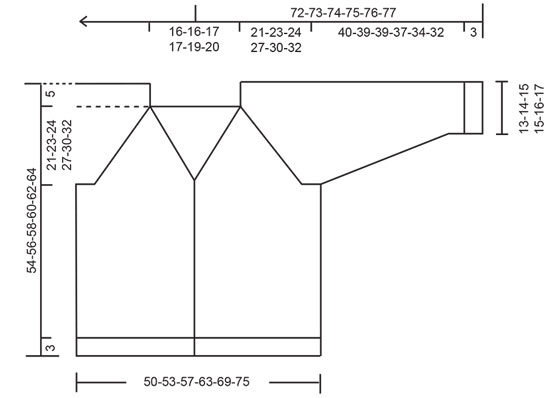 |
|
Have you finished this pattern?Tag your pictures with #dropspattern #delicatedancecardigan or submit them to the #dropsfan gallery. Do you need help with this pattern?You'll find 29 tutorial videos, a Comments/Questions area and more by visiting the pattern on garnstudio.com. © 1982-2025 DROPS Design A/S. We reserve all rights. This document, including all its sub-sections, has copyrights. Read more about what you can do with our patterns at the bottom of each pattern on our site. |
|







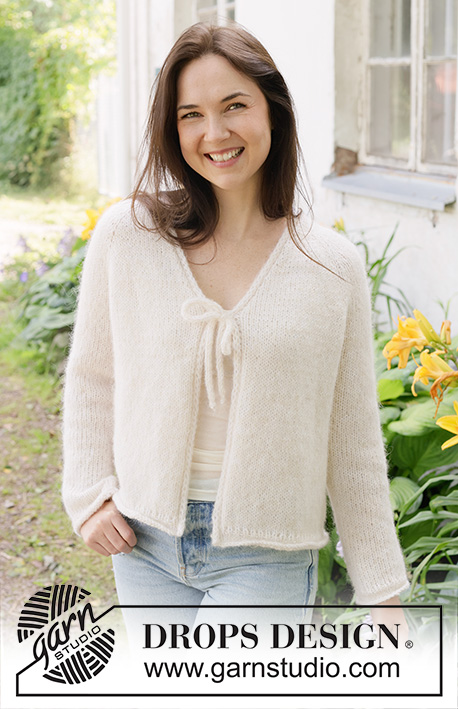


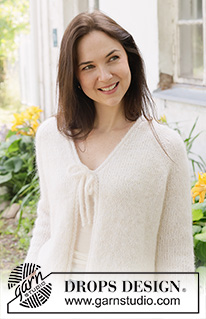
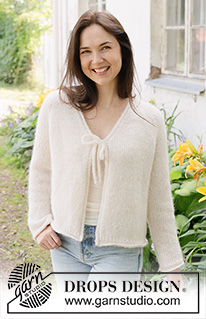
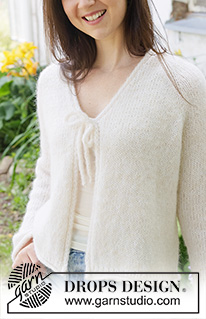
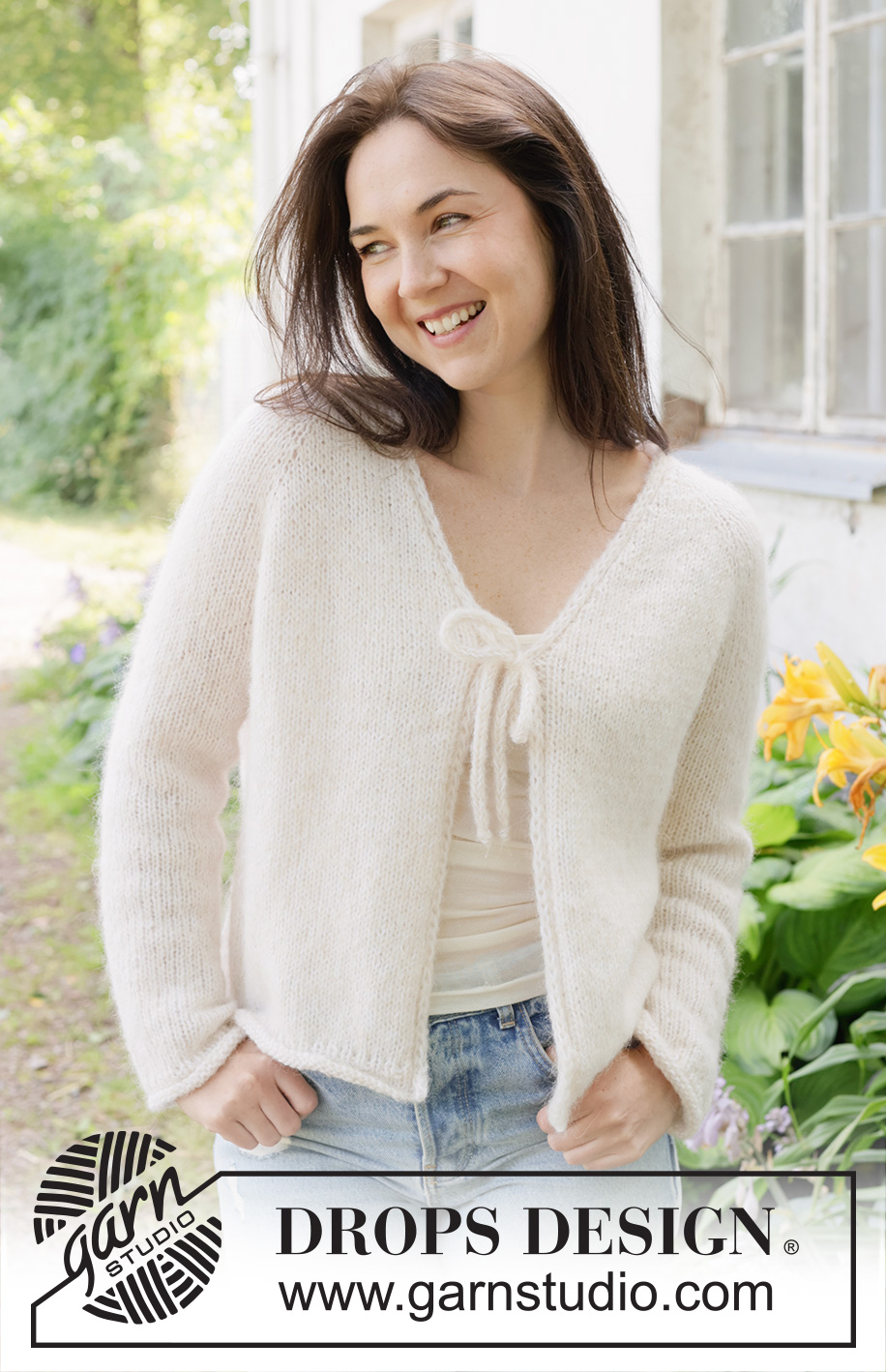
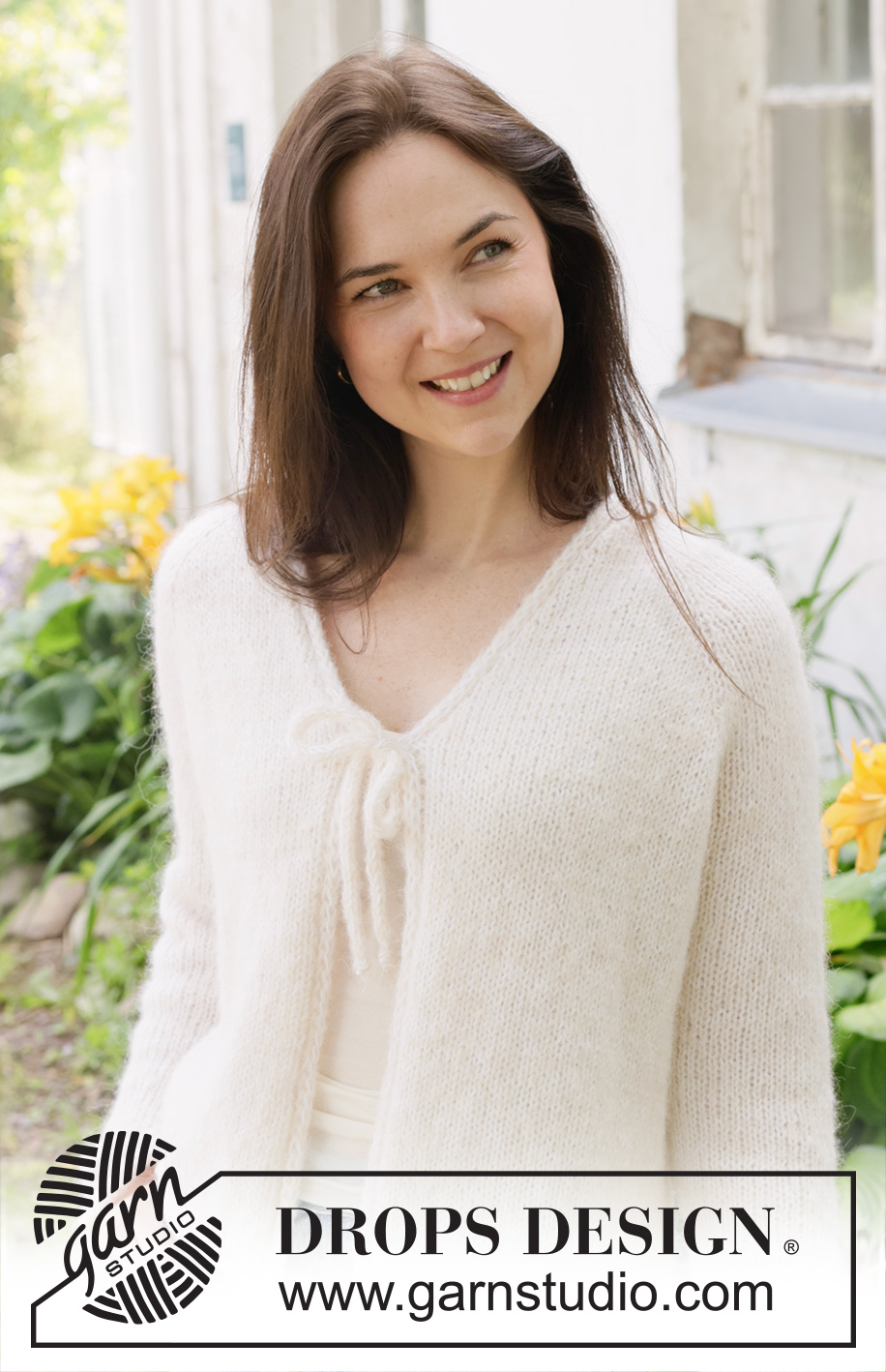
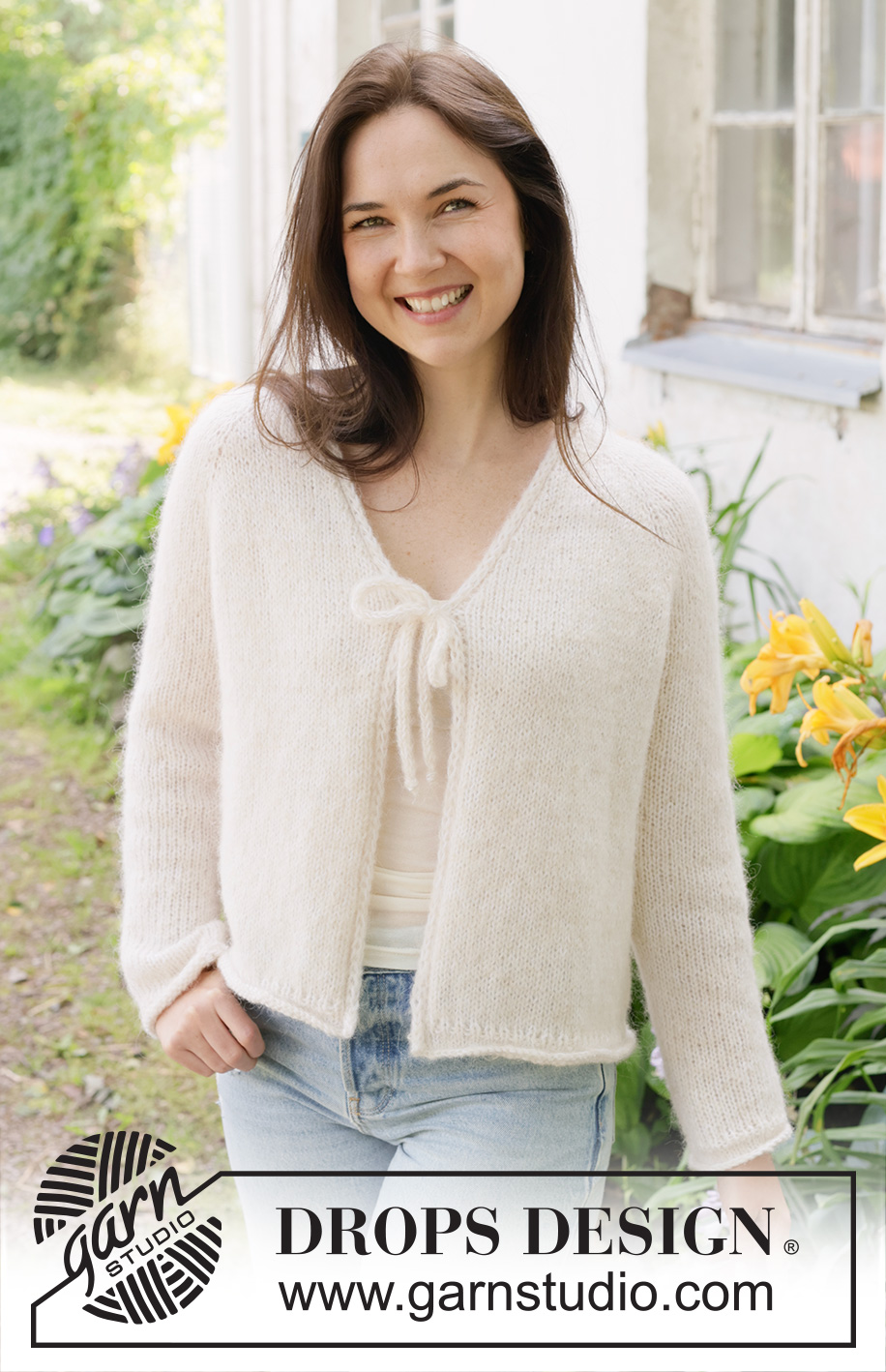
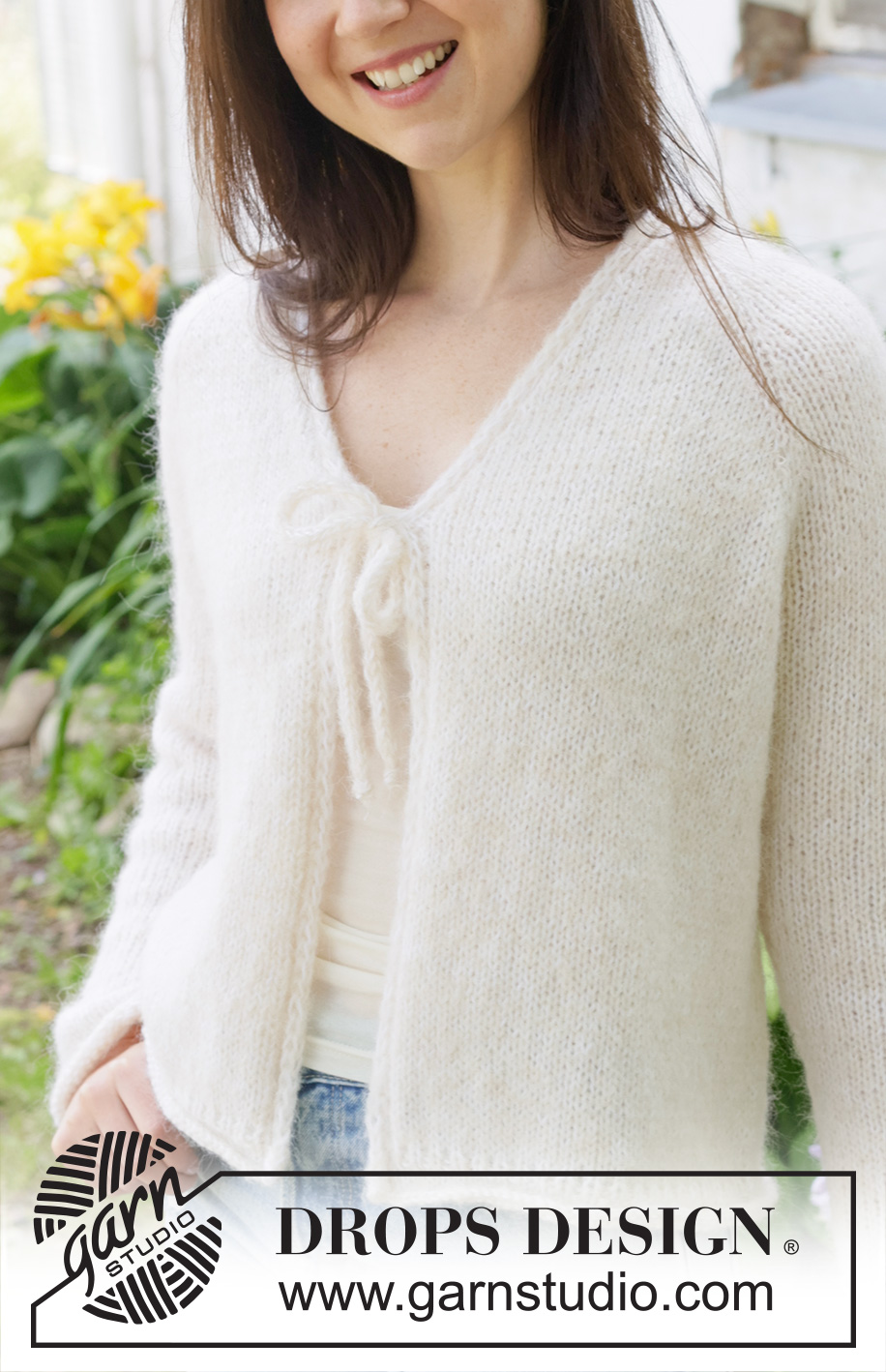



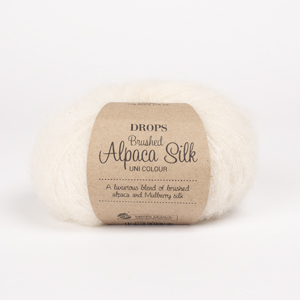
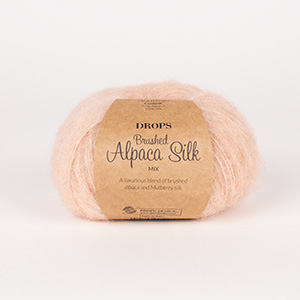
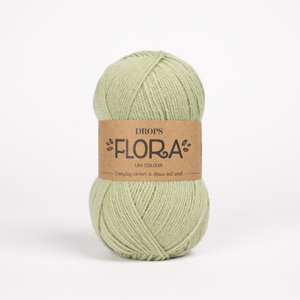
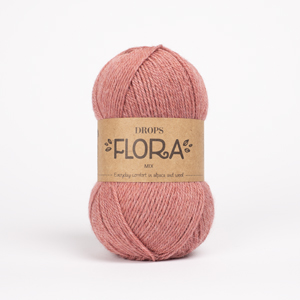





















































Post a comment to pattern DROPS 258-14
We would love to hear what you have to say about this pattern!
If you want to leave a question, please make sure you select the correct category in the form below, to speed up the answering process. Required fields are marked *.